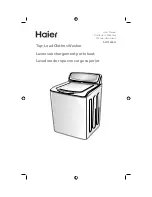
Read before proceeding
Always use eye protection and plastic or rubber
gloves when installing, recharging, adding water, or
cleaning the NBT-610 & 230 tanks.
Failure to comply with these guidelines could result
in severe personal injury, death or substantial
property damage.
Keep pH Power Pellets® and power pellet bags out
of the reach of children and animals. pH Power
Pellets® (magnesium Hydroxide) are NOT food
grade and should not be consumed by humans
or animals.
Always return the clear cover lockdown bolts and
nuts in place and tighten for child safety.
DO NOT exhaust flue gases through tanks,
they are not rated for boiler or furnace flue gases.
Operating NBT tanks as exhaust vents can cause
injury or death from carbon monoxide.
Gas traps must be installed between the boiler, vent
drains, and furnace condensate outlet and the inlet
of all NBT tanks.
Neutralizer and lines must be wet
• Before operating the boiler, hot water heater or furnace, fill
the NBT tanks and traps with tap water. NEVER operate with
tubes or P-traps dry.
Application restrictions
• Condensing boilers, hot water heaters or furnaces, and flue
pipe condensate drains.
• NBT-610 & NBT-230 tanks must be installed below system
P-traps, boiler, furnace, and breeching condensate drains.
• The use of Ferris and Copper piping on the neutralizer inlet or
out is not permitted. The use of CPVC, PVC, PP Tubing, and
Stainless Steel piping is the only material that shall be used.
Combined piping options
Flue pipe condensate drains / NBT tanks
• Condensate drain piping options / Flue Drain, Boiler Drain,
Furnace Drain, Hot Water Heater Drains: See Figures
1,2,3,4,5,6, and 7.
• If using a separate NBT-610 & 230 tank for a common flue
pipe drain the tank should be rated at 33.3% of the total gross
BTU of all units attached to the common vent.
Replacement of the NBT-610 & NBT-230 pH
Power Pellet
®
Media Bags
• The media bags should be replaced when pH level at the
NBT-610 & NBT-230 outlet level falls below 5.0.
• At a minimum the media bags must be changed once a year.
• Use only JJM pH Power Pellet® media bags. DO NOTE USE
LIMESTONE OR MARBLE CHIPS.
What is pH?
The pH measurement of a fluid is an indicator of the acidity or
alkalinity. Neutral fluids have pH of 7.0. Acid fluids have pH below
7. And alkaline fluids have pH above 7 (up to 14). The pH can be
easily measured using a digital pocket pH probe.
Condensate pH from condensing boilers and furnaces is typically
around 3.2 - 4.0. The condensate pH needs to be increased (made
more neutral) to prevent possible damage to cast iron soil pipe,
ABS pipe, septic tanks, plants, wastewater treatment plants and
other materials handling wastewater.
NBT-610 & NBT-230 condensate pH
treatment tanks increase pH (reduce
acidity).
NBT residential/commercial flue-side condensate neutralizing
tanks are designed to raise the pH level of the condensate dis-
charged by high-efficiency boilers and warm air furnaces and
hot water heaters.
Applying NBT-610 & NBT-230 neutralizing
tanks
Condensate can be collected from flueways and boiler/furnace
condensate trap outlets. See WARNING section at left for guide-
lines on application.
Match neutralizing tank to boiler, hot water heater and furnace
gross BTU input ratings.
Do not install a condensate pump unit before the NBT tanks
inlet; a condensate pump can only be installed at the outlet of a
NBT tank.
Locate the neutralizing tank outlet port below the condensate
connection and slightly above the floor drain or inlet to a con-
densate pump reservoir (if used).
Follow the guidelines in this manual, the boiler/furnace manual
and all applicable local codes when installing, using and main-
taining NBT tanks condensate neutralizing tank.
Keep pH Power Pellets® and power pellet bags
out of the reach of children and animals. pH Power
Pellets® (magnesium Hydroxide) are NOT food
grade and should not be consumed by humans
or animals.
Always return the clear cover lockdown bolts and
nuts in place and tighten for child safety.
NBT
series Acidic Condensate pH Treatment Kits –– Installation/Operation & Maintenance
2
Overview




























